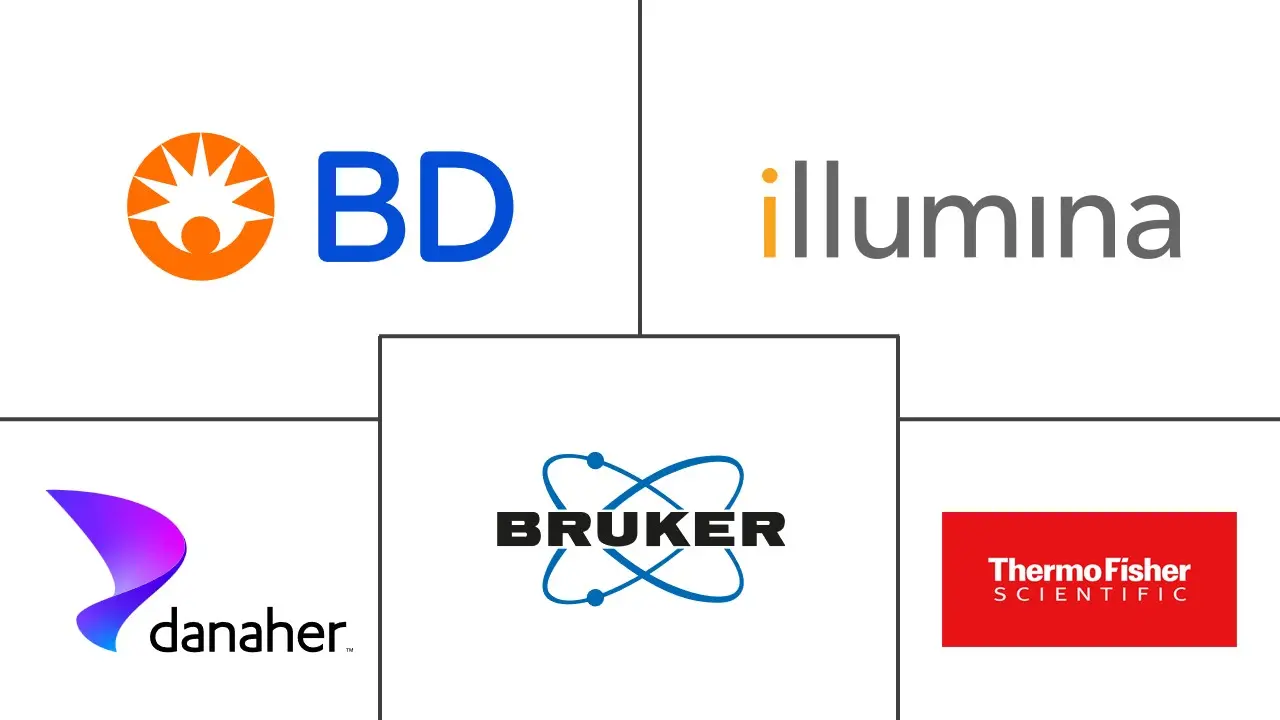Multiomics Market Size and Share
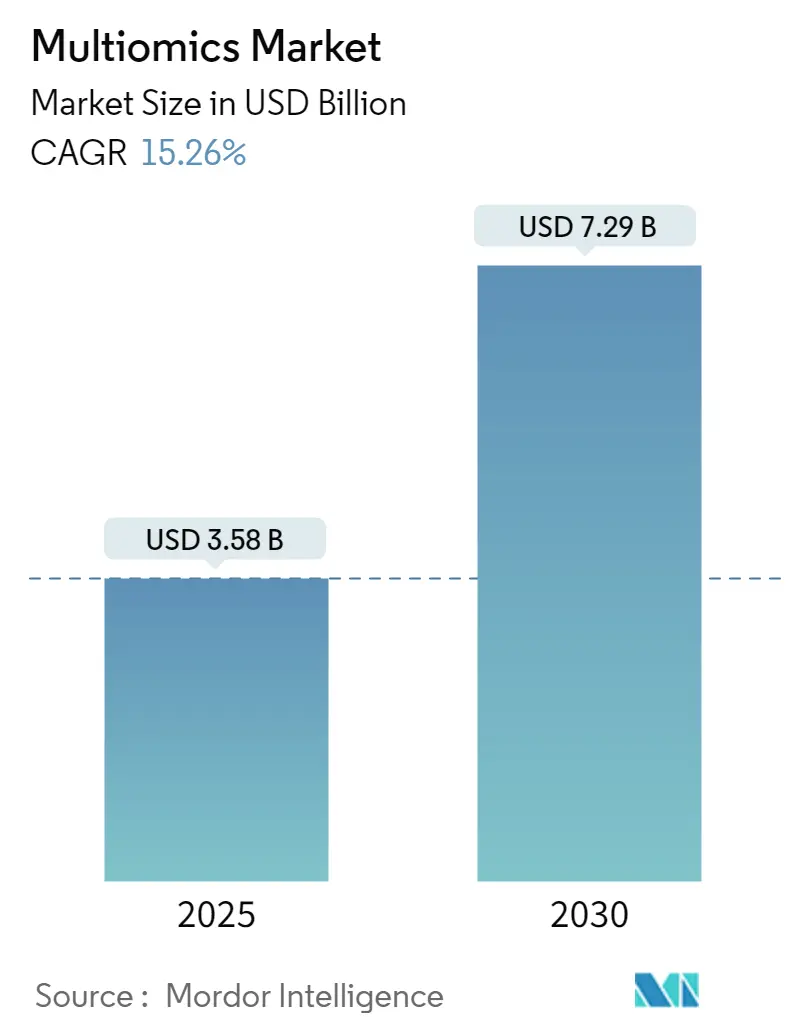
Multiomics Market Analysis by Mordor Intelligence
The Multiomics Market size is estimated at USD 3.58 billion in 2025, and is expected to reach USD 7.29 billion by 2030, at a CAGR of 15.26% during the forecast period (2025-2030).
The multiomics market is expected to grow rapidly due to the increasing demand for single-cell multiomics in new drug development and disease diagnostics. Companies are developing novel single-cell platforms to study and discover areas of immunology. Collectively, this method is transforming molecular cell biology research. Single-cell multi-omics technologies characterize cell states and actions by concurrently integrating various single-modality omics methods that profile the epigenome, transcriptome, proteome, genome, epitranscriptome, metabolome, and other omics. For instance, in February 2023, BD (Becton, Dickinson, and Company) introduced a single-cell multiomics platform, BD Rhapsody HT Xpress System, to help in scientific discovery in various fields, including genetic disease research, immunology, cancer and chronic disorder research.
The increasing interest among researchers in single-cell genomics is also expected to boost the market demand as single-cell genomics can facilitate novel treatments for cardiovascular diseases (CVDs). For instance, in March 2023, the National Library of Medicine published research stating that single-cell genomics had wide applications in cardiovascular disorder research. It can be utilized in heart development, myocardial infarction (MI), cardiac ischemia-reperfusion (I/R) injury, atherosclerosis, atrial fibrillation, cardiac hypertrophy, and heart failure. Thus, with the increasing CVDs, the demand for single-cell genomics is also expected to increase significantly, driving the market’s growth.
The demand for multiomics in personalized medicine is growing as it is widely used to develop therapeutic strategies and knowledge bases for predictive and personalized medicine. In the future, the demand for multiomics in the field of personalized medicine is expected to be driven explicitly by the role of multiomics in diagnostic and prognostic biomarkers and its importance in pharmacological treatment.
However, the high cost of single-cell analysis and the challenges and complexity in multiomics data integration may pose a challenge to market growth in the near future.
Global Multiomics Market Trends and Insights
The Bulk Multiomics Segment is Expected to Hold the Largest Share of the Market
Bulk multiomics allows the description of each sample at the cell-population level, delivering the averaged profile of many cells. Bulk multiomics is an integrated approach that simultaneously analyzes multiple types of biological data, such as genomics, transcriptomics, proteomics, metabolomics, and epigenomics, from a bulk (or population) sample of cells. This technique provides a comprehensive view of the molecular landscape within a biological sample, offering insights into complex biological systems and disease mechanisms.
The bulk multiomics sub-segment is projected to dominate the type segment during the forecast period owing to the simple experimental process and affordable large-scale sample dissection of bulk multiomics. Generally, bulk multiomics is vital for systematically defining disorder pathogenesis and further phenotypes at the individual level. Also, the bulk multiomics approach excludes the need for living cells. For instance, a June 2023 article in the Molecular & Cellular Proteomics Research Journal highlighted that swift advancements in omics technologies and enhanced computational capabilities led to the introduction of multiomics-empowered deep phenotyping. This evolution tracks the interplay of various biological levels over time, bolstering precision health initiatives.
As high-throughput bulk profiling technologies, such as sequencing and mass spectrometry (MS), become more advanced and affordable, numerous studies are systematically exploring various diseases. These studies generate extensive multimodal data from diverse samples and individuals. For example, a September 2023 study published in Cancer Cell highlighted that integrative multiomics analysis, when based on bulk tissue, offered a dependable estimate across a wide range of tumors. Consequently, this finding is poised to boost the adoption of multiomics in bulk profiling, thereby propelling market growth.
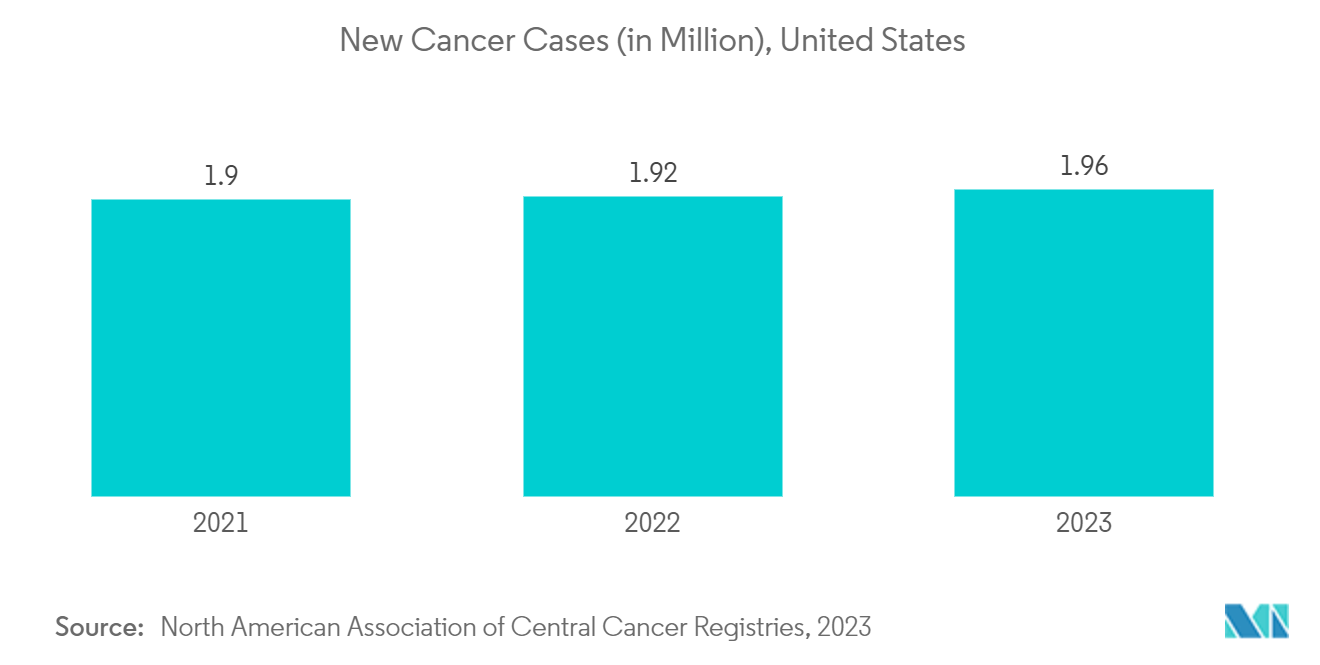
North America is Expected to Dominate the Multiomics Market
North America is expected to dominate the market during the forecast period owing to the availability of developed healthcare infrastructure, continuous research activities for developing advanced technologies, and the presence of key players in this region, which sustain the highest revenue allocation. The companies are investing in product portfolio R&D to strengthen their presence. For instance, in February 2023, the US company Tempus collaborated with Actuate Therapeutics to help discover and validate biomarker profiles in cancer patients. Tempus uses the multiomics approach to enhance research and increase novel scientific insights.
In September 2023, the National Institutes of Health, under the National Human Genome Research Institute (NHGRI), unveiled the Multiomics for Health and Disease Consortium. This initiative aims to propel the generation and analysis of multiomics data, enhancing human health research. The newly formed consortium is set to pioneer innovative strategies for clinical studies, focusing on ancestrally diverse populations.
The key companies in the region use organic and inorganic strategies to gain significant market shares. For instance, in September 2023, Moderna and Immatics undertook a strategic research and development collaboration to pioneer novel and transformative therapies for cancer patients with elevated unmet medical requirements in the United States. This is expected to include designing breakthrough mRNA-enabled in vivo expressed TCER molecules and evaluating Immatics's investigational IMA203 PRAME TCR-T in combination with Moderna's investigational PRAME mRNA cancer vaccine. This broad multi-platform collaboration was proposed to leverage the company's profound scientific expertise and core functional capacities, combining Immatics's TCR platform with Moderna's cutting-edge mRNA technology and span various therapeutic modalities, including bispecific, cell therapy, and cancer vaccines.
The introduction of multiomics in Canada is poised to propel the market in the upcoming years. For example, in July 2024, the Brain Single Cell Initiative, backed by the Canada Brain Research Fund (CBRF), a collaborative effort involving the Government of Canada (via Health Canada), the Brain Canada Foundation, and the University Health Network, hosted an Introductory Spatial Omics Analysis Workshop. This workshop helped researchers to profile the transcriptome within a spatial context. Participants will gain insights into single molecular spatial transcriptome and image analysis, benefiting from a supportive environment and hands-on practical sessions.
Hence, due to the above-mentioned strategies adopted by the key players and associations in the region, significant growth is expected over the forecast period in the North American market.
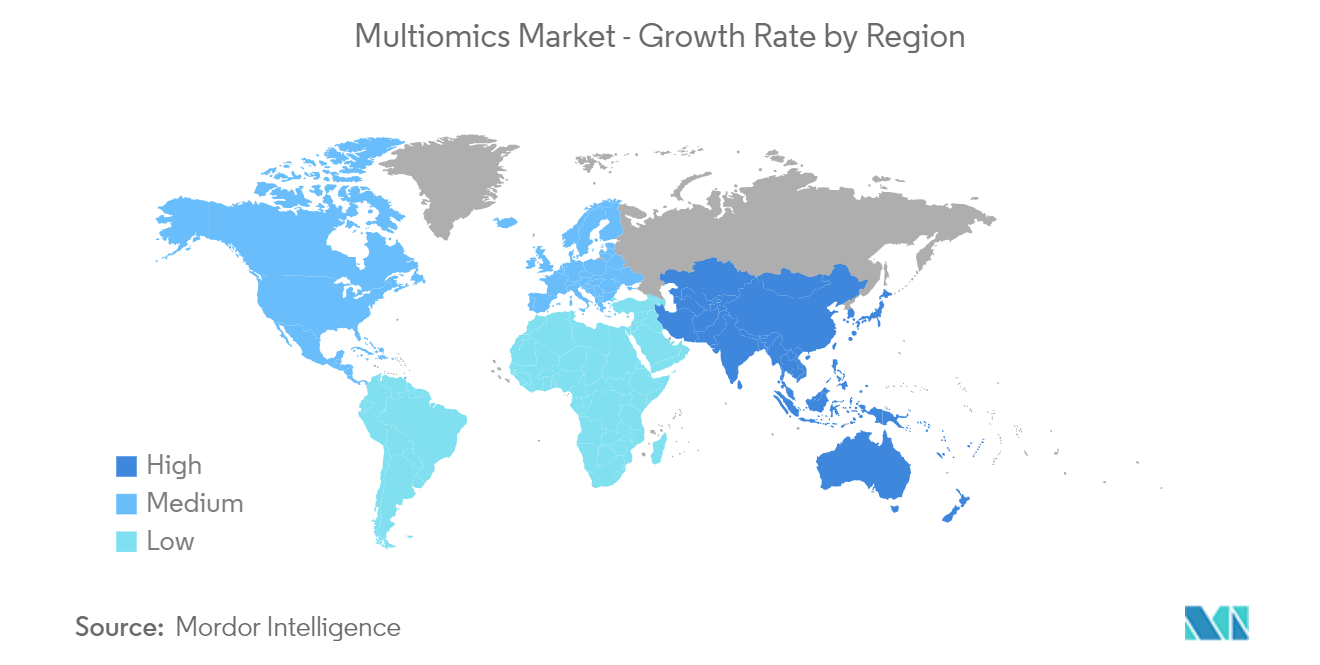
Competitive Landscape
The multiomics market is moderately consolidated in nature due to the presence of several companies operating globally as well as regionally. The market's key players occupy a significant share. However, many small companies are entering the market with the help of investors and developing new technologies. In the coming years, market competitiveness is expected to increase due to the entrance of new players. Some of the key companies in the multiomics market include BD, Bruker, DH Life Sciences, LLC, Illumina Inc., and Thermo Fisher Scientific Inc.
Multiomics Industry Leaders
-
BD
-
Bruker
-
Illumina, Inc
-
DH Life Sciences, LLC
-
Thermo Fisher Scientific Inc.
- *Disclaimer: Major Players sorted in no particular order
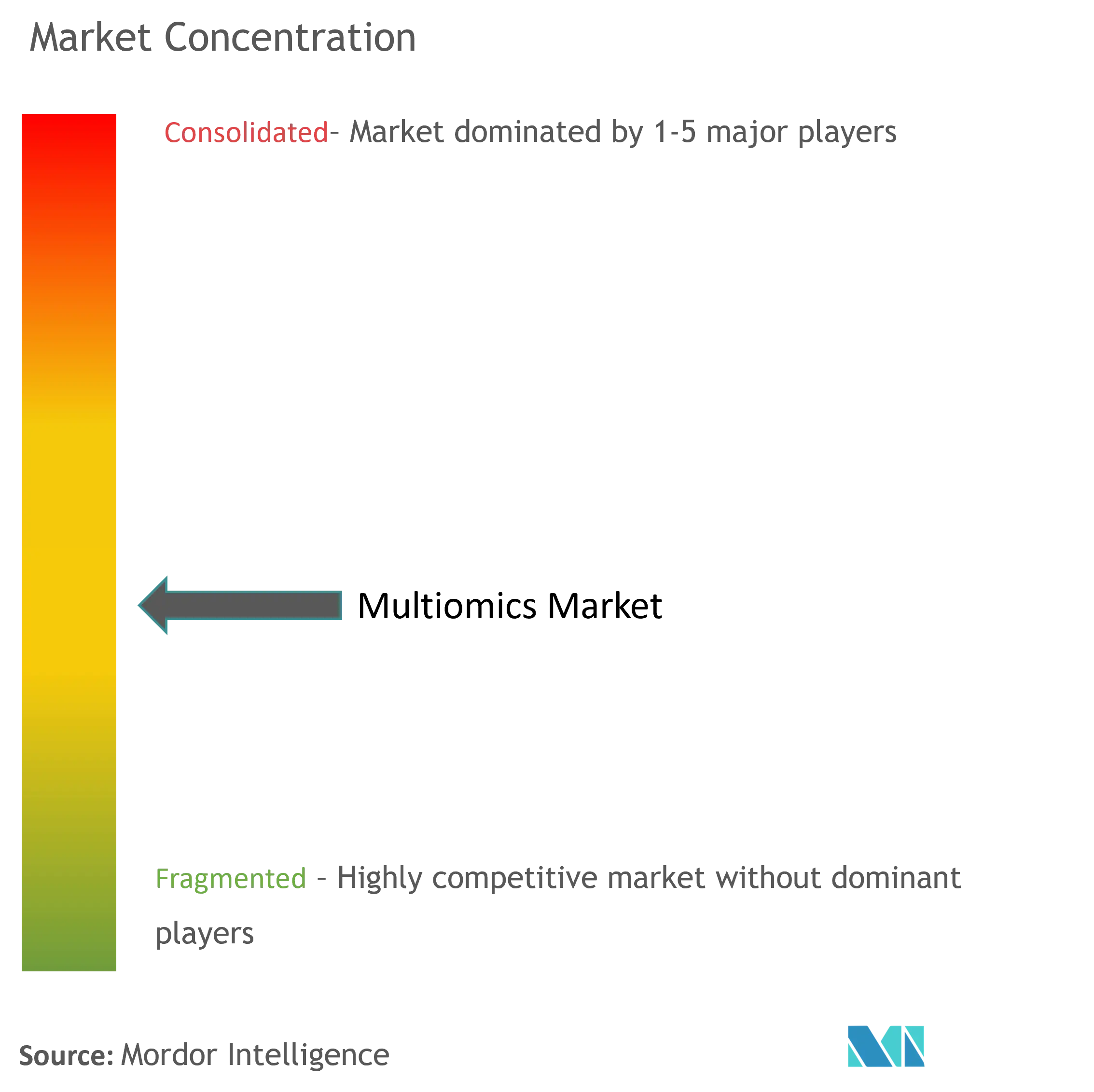
Recent Industry Developments
- February 2024: Vizzhy Inc. launched the world's inaugural Multiomics Lab in Bengaluru, India, heralding a major advancement in healthcare innovation. Equipped with cutting-edge tools and health AI technology, the lab enables physicians to pinpoint root causes and offer personalized recommendations for their patients.
- September 2023: MGI, a provider of technology and tools for life science, introduced the DCS Lab Initiative to stimulate crucial scientific research. This initiative encourages large-scale multiomics laboratories. Under the initiative, the organization offers products for numerous applications, including cell omics, DNA sequencing, and spatial omics based on DNBSEQ technologies, to specified research institutions globally.
- April 2023: Biomodal, formerly Cambridge Epigenetix, introduced a new duet multiomics solution that can enable simultaneous phased reading of epigenetic and genetic information in a single, low-volume sample.
Global Multiomics Market Report Scope
Multiomics (multiple omics) specifies an integrated method to power breakthroughs across several levels of biology. Multiomics is mainly used to study the complete genetic or molecular profiles of humans and other organisms by combining the multiple levels of molecular biology.
The multiomics market is segmented into product, type, platform, application, end user, and geography. By product, the market is segmented into instruments, reagents, and other products. The other products include consumables and accessories. By type, the market is segmented into single-cell multiomics and bulk multiomics. By platform, the market is segmented into genomics, transcriptomics, proteomics, metabolomics, integrated omics platforms, and other platforms. The other platforms include epigenomics, radiomics, and microbiomes. By application, the market is segmented into cell biology, oncology, neurology, immunology, and other applications. The other applications include agriculture and plant physiology. By end user, the market is segmented into academic and research Institutes, pharmaceutical & biotechnology companies, and other end users. The other end users include scientific laboratories and hospitals. By geography, the market is segmented into North America, Europe, Asia-Pacific, Middle East and Africa, and South America. The report also covers the estimated market sizes and trends for 17 different countries across major regions globally. The report offers the value (USD) for all the above segments.
| Instruments |
| Reagents |
| Other Products |
| Single-cell Multiomics |
| Bulk Multiomics |
| Genomics |
| Transcriptomics |
| Proteomics |
| Metabolomics |
| Integrated Omics Platforms |
| Other Platforms |
| Cell Biology |
| Oncology |
| Neurology |
| Immunology |
| Other Applications |
| Academic and Research Institutes |
| Pharmaceutical & Biotechnology Companies |
| Other End Users |
| North America | United States |
| Canada | |
| Mexico | |
| Europe | Germany |
| United Kingdom | |
| France | |
| Italy | |
| Spain | |
| Rest of Europe | |
| Asia-Pacific | China |
| Japan | |
| India | |
| Australia | |
| South Korea | |
| Rest of Asia-Pacific | |
| Middle East and Africa | GCC |
| South Africa | |
| Rest of Middle East and Africa | |
| South America | Brazil |
| Argentina | |
| Rest of South America |
| By Product | Instruments | |
| Reagents | ||
| Other Products | ||
| By Type | Single-cell Multiomics | |
| Bulk Multiomics | ||
| By Platform | Genomics | |
| Transcriptomics | ||
| Proteomics | ||
| Metabolomics | ||
| Integrated Omics Platforms | ||
| Other Platforms | ||
| By Application | Cell Biology | |
| Oncology | ||
| Neurology | ||
| Immunology | ||
| Other Applications | ||
| By End User | Academic and Research Institutes | |
| Pharmaceutical & Biotechnology Companies | ||
| Other End Users | ||
| Geography | North America | United States |
| Canada | ||
| Mexico | ||
| Europe | Germany | |
| United Kingdom | ||
| France | ||
| Italy | ||
| Spain | ||
| Rest of Europe | ||
| Asia-Pacific | China | |
| Japan | ||
| India | ||
| Australia | ||
| South Korea | ||
| Rest of Asia-Pacific | ||
| Middle East and Africa | GCC | |
| South Africa | ||
| Rest of Middle East and Africa | ||
| South America | Brazil | |
| Argentina | ||
| Rest of South America | ||
Key Questions Answered in the Report
How big is the Multiomics Market?
The Multiomics Market size is expected to reach USD 3.58 billion in 2025 and grow at a CAGR of 15.26% to reach USD 7.29 billion by 2030.
What is the current Multiomics Market size?
In 2025, the Multiomics Market size is expected to reach USD 3.58 billion.
Who are the key players in Multiomics Market?
BD, Bruker, Illumina, Inc, DH Life Sciences, LLC and Thermo Fisher Scientific Inc. are the major companies operating in the Multiomics Market.
Which is the fastest growing region in Multiomics Market?
Asia Pacific is estimated to grow at the highest CAGR over the forecast period (2025-2030).
Which region has the biggest share in Multiomics Market?
In 2025, the North America accounts for the largest market share in Multiomics Market.
What years does this Multiomics Market cover, and what was the market size in 2024?
In 2024, the Multiomics Market size was estimated at USD 3.03 billion. The report covers the Multiomics Market historical market size for years: 2021, 2022, 2023 and 2024. The report also forecasts the Multiomics Market size for years: 2025, 2026, 2027, 2028, 2029 and 2030.
Page last updated on:
Multiomics Market Report
Statistics for the 2025 Multiomics market share, size and revenue growth rate, created by Mordor Intelligence™ Industry Reports. Multiomics analysis includes a market forecast outlook for 2025 to 2030 and historical overview. Get a sample of this industry analysis as a free report PDF download.
